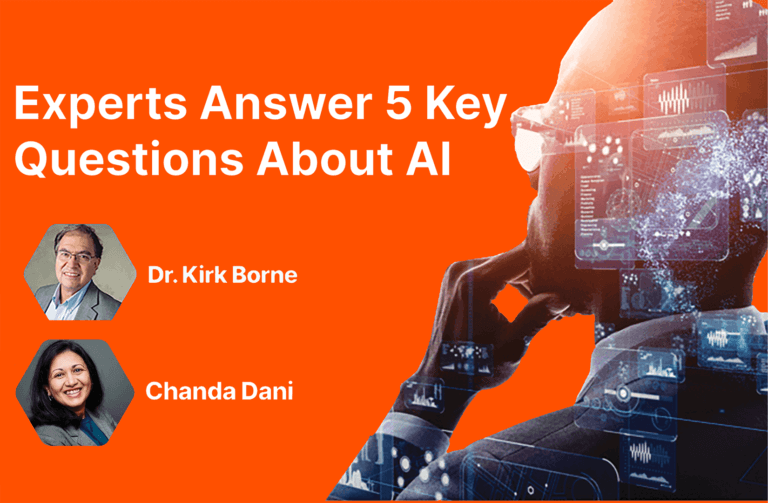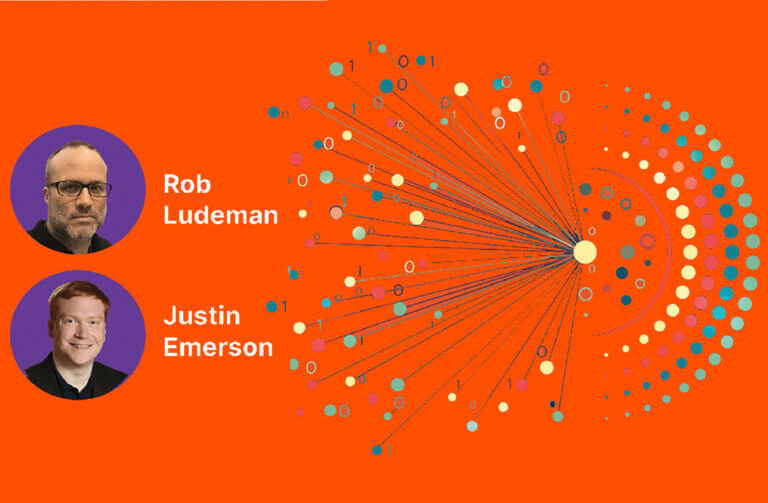Summary
The quest to leverage AI may be in full swing, but there are still many questions about implementing, managing, and accessing AI solutions. A recent Pure Storage webinar explored the priorities and challenges organizations face when using AI and how they can overcome them.
The quest to leverage AI may be in full swing across many industries, but there are still a truckload of questions about implementing, managing, and accessing AI solutions. That’s because adopting AI has ramifications organization-wide, extending from cost to culture.
At Pure Storage, our mantra is that AI success starts with data success. In a recent Pure Storage webinar, Dr. Kirk Borne, founder and owner of Data Leadership Group, and Chanda Dani, VP Product Marketing, Solutions for Pure Storage, shared the common challenges of adopting AI and the barriers that prevent optimal return on investment. Judging from the number of participant questions, business leaders have a big appetite for AI dos and don’ts—and also want guidance on navigating the connections among data sources.
Below are some of the questions that Borne and Dani fielded, along with their responses.
Q: What high-level advice can you provide for organizations just beginning AI adoptions?
A: At this stage, one of the hardest things to do is block out all the hype coming from the marketplace, telling you you’re way behind and you need to start spending. Map out a plan based on your business goals, start small to get some early wins, and above all, stick to your plan.
Keep in mind that your biggest challenge may be cultural, with workers who are afraid of their jobs being given to AI solutions and eager C-suite executives who want to see rapid ROI. Ask managers to give everyone a voice in the AI adoption process, and stress the need for collaboration. Create an adoption plan that can show good results early on to win over the C-suite. Pure Storage helps customers accelerate adoption of AI with a data storage platform that is easy to deploy and manage, accelerates every step of the AI data pipeline, and can grow as you need it to, without disruption. In addition, remember that a good deal of AI data provisioning can be acquired on a subscription basis, such as with Pure’s software-as-a-service solutions.
Q: Can you make specific suggestions about architecture for AI?
A: Pure has done the work to engineer certified and validated hardware and software stacks for AI.
In collaboration with NVIDIA, we offer AI-ready Infrastructure. AIRI combines Pure Storage FlashBlade//S with the NVIDIA DGX BasePOD platform to provide the underlying infrastructure and software to accelerate deployment and execution of enterprise AI workloads. AIRI is an NVIDIA DGX BasePOD certified reference architecture and provides an invaluable tool for getting an AI deployment off the ground.
Pure partnered with Cisco to provide FlashStack solutions for GenAI and MLOps. These reference architectures are Cisco Validated Designs which simplify, automate, and scale infrastructure for rapid, foolproof deployment of AI solutions. Learn more in the blog “FlashStack for AI Checks All the Boxes for Rapid AI Deployment.”
Q: What should be considered when planning requirements for AI data storage?
A: It’s important to understand that AI can be seen as an IT convergence, with data as the common denominator. AI is truly going multimodal, with text, audio, images, incorporated into training and inference. Applications, teams, users, and sources are all being brought together, intersecting with data that everyone needs to use at once. There’s a reason we say there’s no such thing as “cold or old data” in AI, which means AI data storage should be able to consolidate data and provide high-performing access to a large number of users at once. It should be able to handle not only high-performance active data but also content repository data, in an energy-efficient and economical way to lower TCO. Leveraging our //E family for older data previously stuck in data lakes on spinning disk makes it readily available for AI.
Pure’s data storage platform for AI provides high-performance,capacity-/cost-optimized all flash storage. Finally, it should also be scalable and non-disruptively upgradeable to handle the uncertain growth requirements for your AI initiatives.
Q: Medical and public health data is incredibly messy, with legacy data, siloed data, and strict compliance requirements. Can AI really provide ROI against this backdrop?
A: AI is incredibly helpful in the medical field, particularly in working with multimodal data such as images, lab reports, physician notes, and health records. Large language models specific to healthcare and life sciences domains can be enhanced by institutions with patient records and proprietary data using retrieval-augmented generation (RAG). The results include improved answers for diagnoses, treatments, and health monitoring. Results are more accurate, relevant, and timely, enabling better patient outcomes.
Q: How do we create or manage AI synergies across multiple software vendors?
A: When you have different software vendors’ data on separate silos of storage, communication and leverage between these applications can cause friction points and require inefficient use of storage. A platform that can centralize your AI data will alleviate these issues, supporting both performance application and archive efficiency. Pure Storage has customers who have centralized their AI data for researchers and collaborators around the world to do things such as fight the global COVID pandemic. Check out our case study on McArthur Lab to read how one organization did it.
Hear more about the key to AI success. Watch the webinar, “AI Synergy Unleashed: Bridging Data, IT, and Innovation for Future Success.”







